| |  | 2025 Legislative Agenda Results Summary The 2025 legislative session has gone into overtime, and as of early June discussions regarding the possible redesign of the state’s Pre-K to 12 education system have not yet concluded. Most other legislative business was concluded by the end of May. Overall, it was a moderately successful session for the early childhood community and for the issues on the Alliance’s 2025 Legislative Agenda. While the usual budget limitations meant some requests were unfunded, important victories occurred in a number of areas. In some areas where progress was made, efforts will need to continue next year to secure full legislative approval. Alliance staff will be working over the summer and fall with our members on ongoing and potential future campaigns, as we make plans for advocacy in the second year of the biennium. We are also preparing for potential work this fall on responses to any federal funding cuts that are agreed to in Washington, DC. For more information on any of these issues, get in touch with the lead organizations listed below or with Matt Levin, Alliance Executive Director, at matt@vecaa.org. | | | | 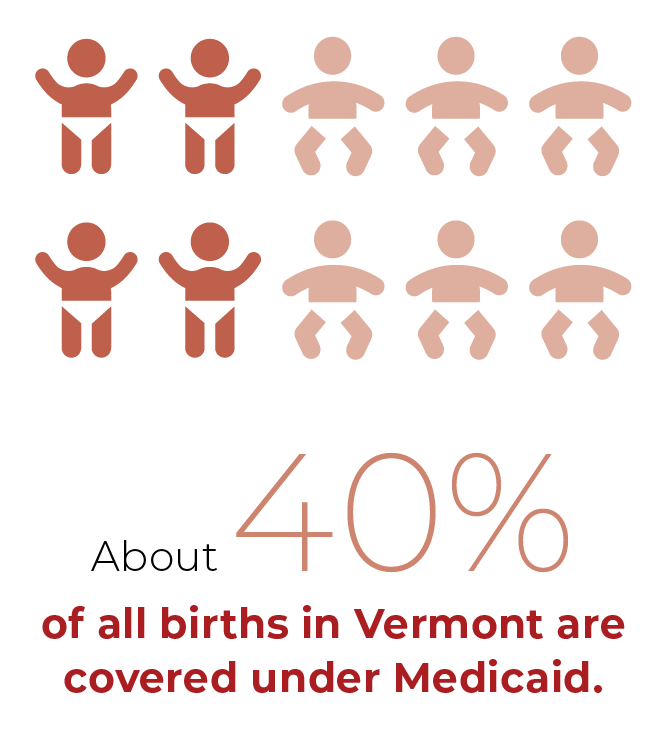 | ACCESS TO DOULA COVERAGE: Medicaid Coverage for Community Doula Care: S. 53, FY26 Budget Result: Bill Passage Pre-session goal: Passage of legislation to enable Vermont families covered by Medicaid to access the support of a Community Doula, who can provide care and advocacy during the perinatal period that meets the self-determined needs of the birthing person. Thanks to strong support from multiple committees, including Senate Health and Welfare and House Health Care, the Legislature passed S. 53, a bill that continues the multi-year process necessary to provide for Medicaid coverage for a new service. The bill has been signed by the Governor. It instructs the Office of Professional Regulation (OPR) to create the certification necessary for doulas who would like to access Medicaid funding, and the Department of Vermont Health Access to submit the necessary paperwork to federal regulators to include the services in the state’s Medicaid program. The FY26 Budget includes the modest funding necessary to support OPR’s work. The funding to provide Medicaid coverage was not included in the Budget, as the coverage is not expected to begin until the start of FY27 (July ’26) at the earliest. Advocacy will continue on the issue in the next legislative session. LEAD ORGANIZATION: Doula Association of Vermont | | | | 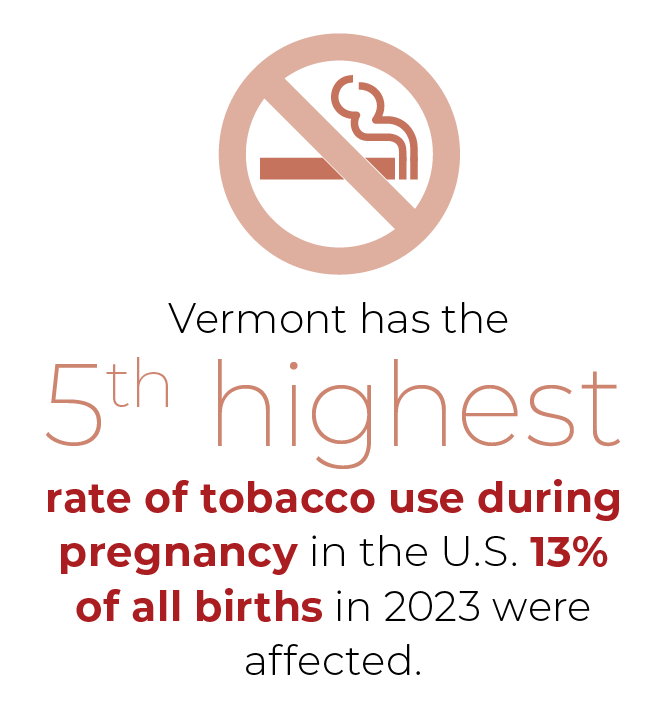 | PARENT CHILD CENTER NETWORK: Supporting the Parent Child Center Network to Reduce Tobacco Use and Exposure: FY26 Budget Result: Partial funding secured Pre-session goal: Secure $500,000 from the State’s Tobacco Settlement funds to build the capacity and reach of the 15 PCCs to provide screening, cessation program referrals, education, and prevention activities to support parents to stop smoking and vaping and maintain smoke-free homes. The Parent Child Center Network (PCCN) request was not supported by the House Human Services Committee and not included in the House version of the FY26 Budget. However, the Senate supported partial funding of the request, using a $250,000 one-time General Fund allocation rather than the Tobacco Settlement funding. This proposal was agreed to during the Budget Conference Committee negotiations and was included in the Legislature’s FY26 Budget. LEAD ORGANIZATION: Vermont Parent Child Center Network | | | | 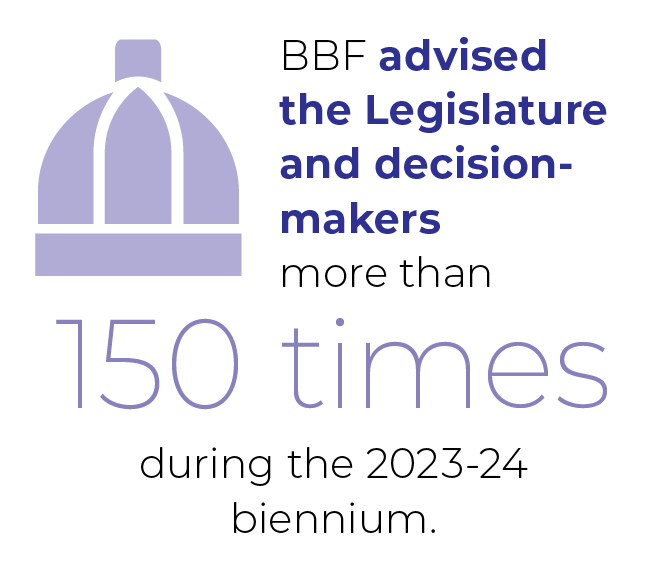 | BUILDING BRIGHT FUTURES: Supporting Capacity to Advise and Monitor Vermont’s Early Childhood System: FY26 Budget Result: Funding not secured Pre-session goal: Secure an additional $322,445 in base funding in FY26 to support monitoring, accountability, technical assistance/building state and legislative capacity, and advisement. The Governor’s Recommended FY26 Budget contained no funding increase for Building Bright Futures (BBF). While the BBF funding request was supported by the House Human Services and Senate Health and Welfare Committees, the Legislature did not include any additional funding for BBF in the FY26 Budget. LEAD ORGANIZATION: Building Bright Futures | | | | 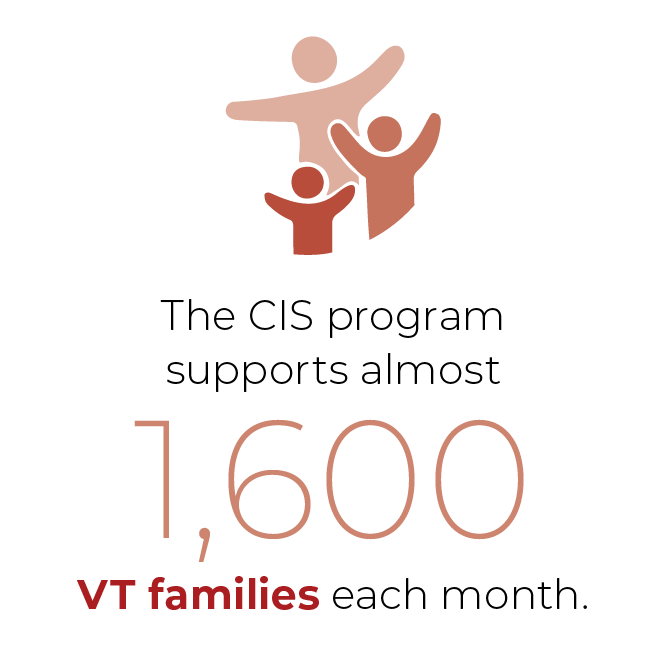 | CHILDREN’S INTEGRATED SERVICES (CIS): Protect Family Access to Integrated Support Through CIS: FY26 Budget Result: No funding secured Pre-session goal: Secure: 1) an FY26 Budget increase of about $1.6m to allow for full funding of the per member/per month rate of $738 identified by the recent study of the true cost of care; 2) inclusion of CIS services in a proposed bill that would require an annual rate study for certain services provided by state contractors, including Designated Agencies; and 3) full funding for the development of CIS data management modules. This session saw limited discussion of CIS-related issues. The Governor’s Recommended FY26 Budget contained no funding increase for CIS rates. While a modest CIS funding increase of $450,000 for rate increases was supported by the House Human Services and Senate Health and Welfare Committees, given the relatively challenging budgetary environment the proposal was not supported in either Appropriations Committee. As a result, the Legislature did not include any additional funding for CIS in their FY26 Budget. The House Human Services Committee was not supportive of including CIS in the annual rate study bill (H. 13), and data management was not considered in either chamber. Challenges for CIS relating to contractual and payment limitations in the state’s Medicaid program were briefly discussed in the House Human Services Committee but did not lead to any concrete action. LEAD ORGANIZATION: VT Early Childhood Advocacy Alliance | | | | 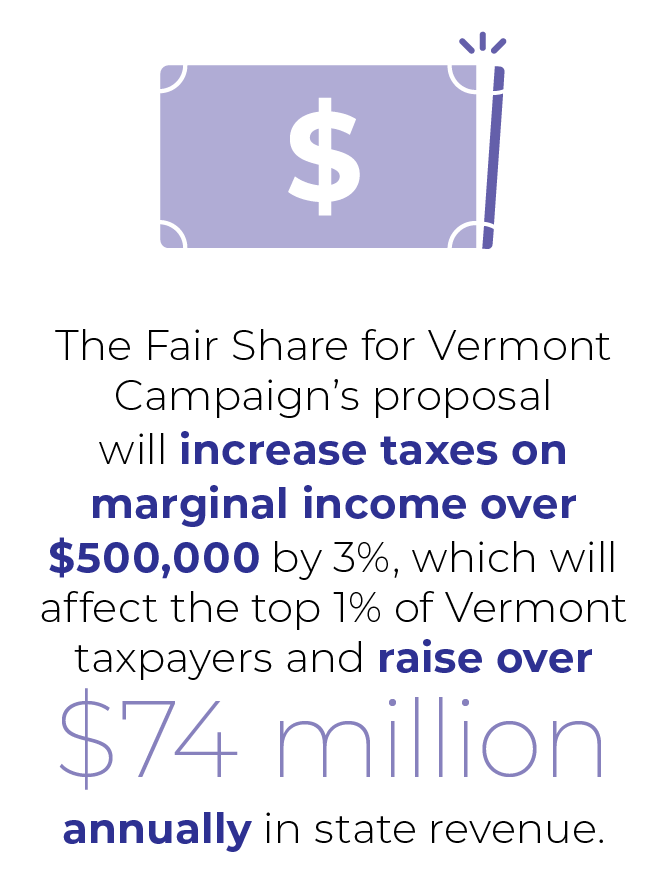 | FAIR SHARE FOR VERMONT: Build a Vermont that Works for Everyone Result: No legislation passed Pre-session goal: Creation of a new tax bracket on annual personal income over $500,000, generating over $74 million annually in state revenue to improve public goods and services. The House Ways and Means Committee had several discussions this session to consider options for a new tax bracket on high income Vermonters. However, no formal proposal has yet been considered by either the Ways and Means or the Senate Finance Committee. Supported by ongoing advocacy, discussions about options to revise the tax code to raise additional revenue are continuing in the Legislature, especially as the impacts of possible federal funding cuts are being considered. LEAD ORGANIZATION: Fund Vermont’s Future Campaign | | | | 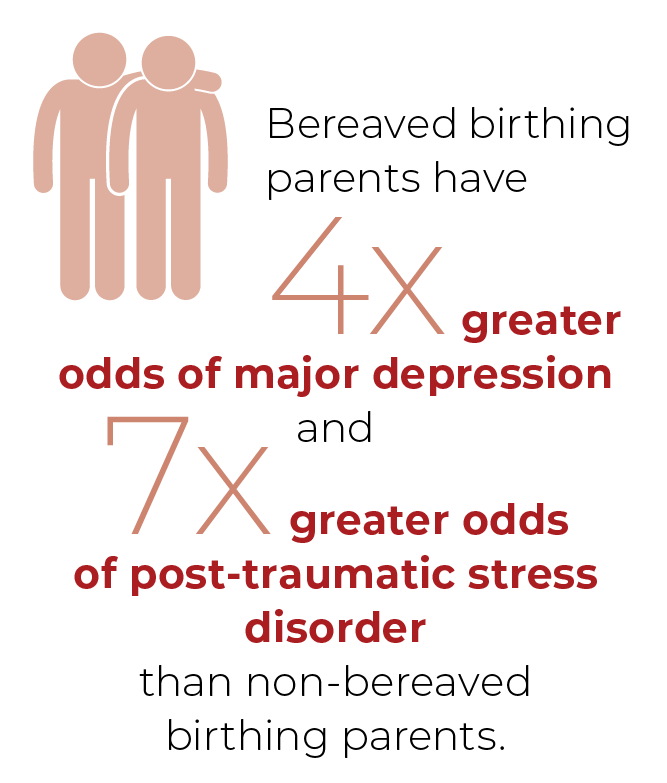 | PERINATAL LOSS: Strengthen Peer Support for Pregnancy & Infant Loss: FY26 Budget Result: Funding secured Pre-session goal: Secure $40,000 in state funding in order to develop a long-term, sustainable plan to strengthen internal capacity and scale up programs that provide free, statewide, peer support for families who have experienced pregnancy and infant loss. The Empty Arms funding request for $40,000 in one-time funds was strongly supported by the House Human Services Committee, with additional active support from Rep. Ashley Bartley. The House Appropriations Committee included the funding in their FY26 Budget. The Senate also supported the request, and the funding was included in the Legislature’s FY26 Budget. LEAD ORGANIZATION: Empty Arms Vermont | | | | 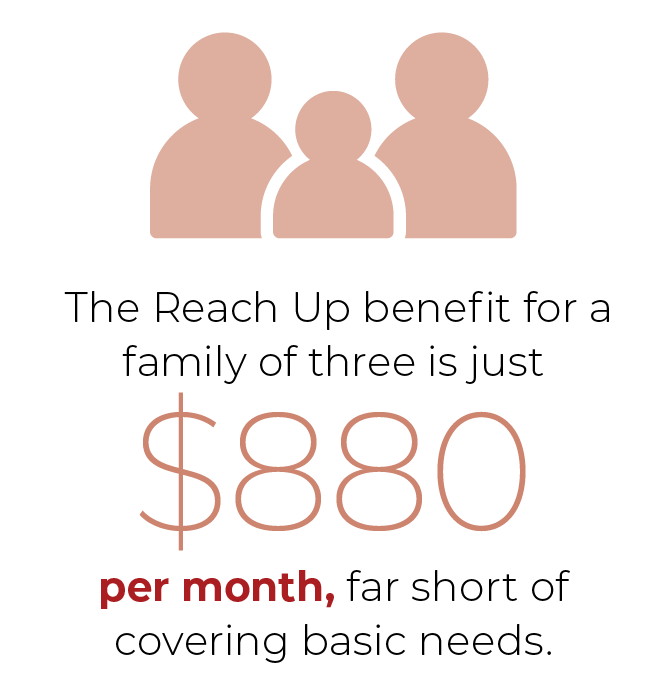 | REACH UP: Ending Child Poverty is Within Our Reach: FY26 Budget Result: No additional funding secured Pre-session goal: Ensure that Reach Up grants fulfill their intended purpose of bringing eligible families' income up to the poverty line by (1) eliminating the “ratable reduction” that reduces the Reach Up benefit by about 50%, (2) using current cost of living estimates to create the annual base Reach Up grant, and (3) prioritizing making permanently affordable housing accessible. Unfortunately, this session saw limited discussion of Reach Up. The Governor’s Recommended FY26 Budget once again built in a forecasted reduction in Reach Up caseload and used the resulting “savings” in other areas of his budget. The House Human Services Committee suggested instead utilizing some of those funds to fund a very modest decrease in the “ratable reduction”, but the House Appropriations Committee did not support this proposal. The proposal was not supported by the Senate. The Senate Appropriations Committee did include language in the Senate FY26 Budget that allows unspent funding for the Reach Ahead pilot program to be used to continue the program until all funding is utilized. The language was agreed to during the Budget Conference Committee negotiations and was included in the Legislature’s FY26 Budget. LEAD ORGANIZATION: Voices for Vermont’s Children for the Vermont Reach Up Coalition | | | | 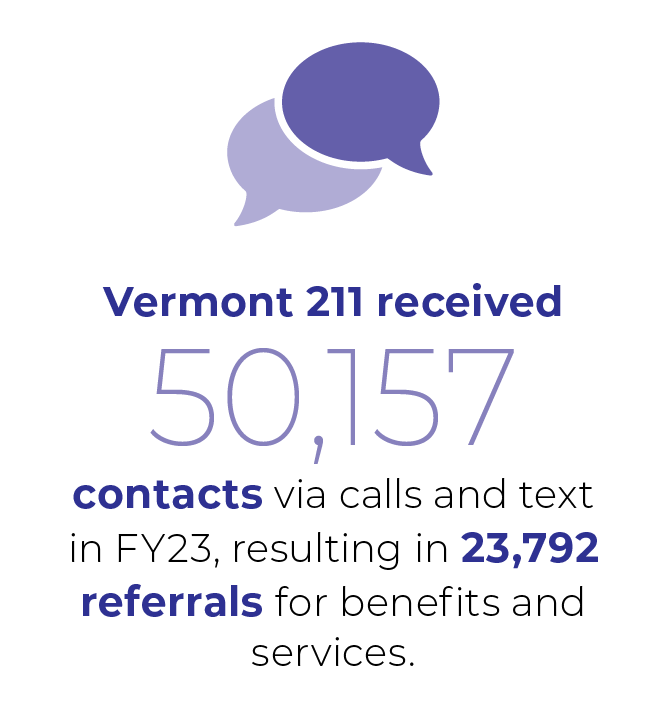 | INFORMATION AND REFERRAL: Ensuring a Strong, Adequately Funded Vermont 211: FY26 Budget Result: Full funding secured Pre-session goal: Secure $1.6 million in base funding for Vermont 211 to maintain current 24/7 operations, as well as readiness for emergency and disaster response and recovery as needed. The Governor’s FY26 Recommended Budget proposed Vermont 211 receive $1.3 million in base funding, which is $332,000 less than the FY25 funding that allowed Vermonters to access a staffed information and referral service 24 hours a day, 7 days a week. The House Human Services and Appropriations Committees strongly backed Vermont 211’s request for full funding to support 24/7 operations, and sufficient funding was included in the House FY26 Budget using a combination of sources. The Senate agreed with the House, and full funding of $1.6 million for 24/7 operations was included in the Legislature’s FY26 Budget. LEAD ORGANIZATION: United Ways of Vermont | | | | 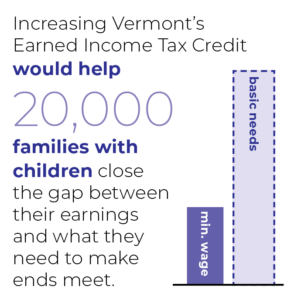 | ANTI-POVERTY TAX CREDITS: Increase financial stability for Vermont families: S.51, FY26 Budget Result: Some improvements secured Pre-session goal: Expand the Vermont EITC from matching 38% of the federal EITC for families with children to 55%, and expand access to the Vermont EITC and CTC for families with low income who need them most, in order to reduce poverty, improve family financial stability, and allow Vermonters to meet needs specific to their families. The Governor’s FY26 Recommended Budget included an expansion of the Vermont Child Tax Credit (CTC) by one year, to include children ages six and younger. While it also included a proposal to expand the Earned Income Tax Credit (EITC), unfortunately the proposal did not apply to families with children. Both the House and Senate supported the Governor’s proposals and included them in their FY26 Budget. The proposals were placed in statute through S. 51, which is scheduled to secure final passage during the Legislature’s supplemental session in mid-June. The bill also includes a technical clarification about who is eligible for CTC. LEAD ORGANIZATION: Public Assets Institute on behalf of the Vermont Anti-Poverty Tax Credit Coalition | | | | 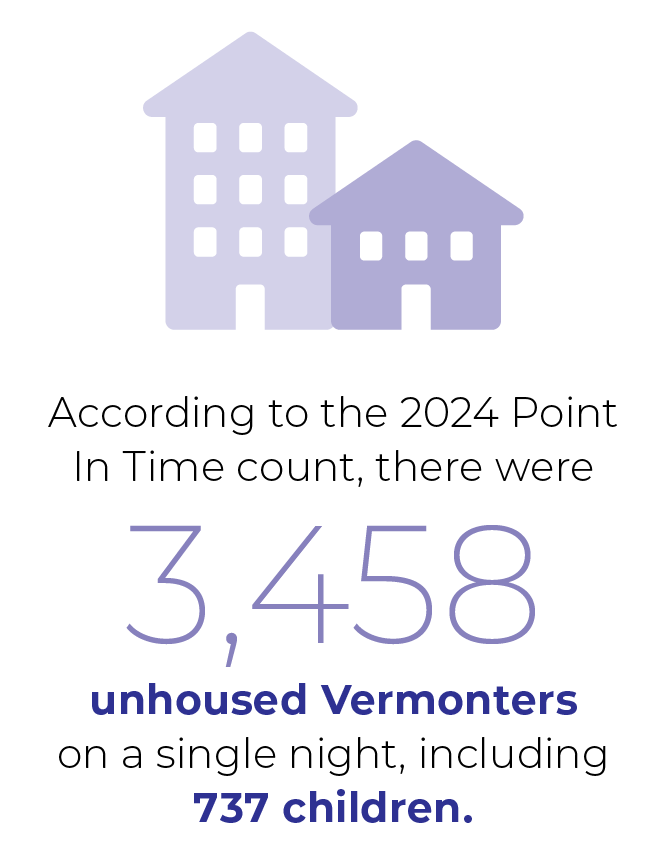 | HOUSING & HOMELESSNESS: Addressing Vermont’s Homelessness Crisis: FY26 Budget, H. 91 Result: Bill passed and Vetoed by Governor – status to be determined Pre-session goal: Ensure there is sufficient state funding in FY26 to 1) maximize the capacity of Vermont's affordable housing developers, 2) maintain Vermont's existing homelessness prevention infrastructure, and 3) provide emergency shelter for unhoused Vermonters. The Alliance’s work in the 2025 session focused on supporting advocacy on the second and third pre-session goals, beginning with the FY25 Budget Adjustment process. The Governor’s Recommended FY25 Budget Adjustment did not include any additional funding for General Assistance (GA) emergency housing, which would have left many vulnerable households unsheltered as of April 1. The Budget Adjustment Act (BAA) passed by the Legislature did include additional funding to extend the Winter Weather rules through the end of June, providing shelter for the most vulnerable Vermonters. In large part because of this provision, the Governor vetoed the BAA. Without sufficient time to negotiate a new version, no BAA was passed this session. The Governor then issued an Executive Order which waived the 80-day household cap but unfortunately only for households with children and individuals with certain medical needs. Meanwhile, the House Human Services and Senate Health and Welfare Committees spent considerable time drafting H. 91, a bill to transition the current emergency shelter program to a new structure built on a regional system of care coordinated by Community Action Agencies, starting in FY27. The bill passed by the Legislature would in future years consolidate the existing GA emergency housing benefit, often referred to as the hotel/motel program, and the Housing Opportunity (HOP) grant program, and provide a more consistent and coordinated system for homelessness prevention, emergency shelter, and services to support transitions to permanent housing. The FY26 Budget as signed by the Governor includes funding and language for the coming year that maintains the emergency housing program at current funding levels with some increases for shelter operations and capacity building funding. It also provides transition funding for H.91. Unfortunately, the Governor has vetoed H. 91. Advocates and providers are now working to determine how to proceed in terms of both advocacy and service delivery in coming months. LEAD ORGANIZATION: Housing & Homelessness Alliance of Vermont | | | | 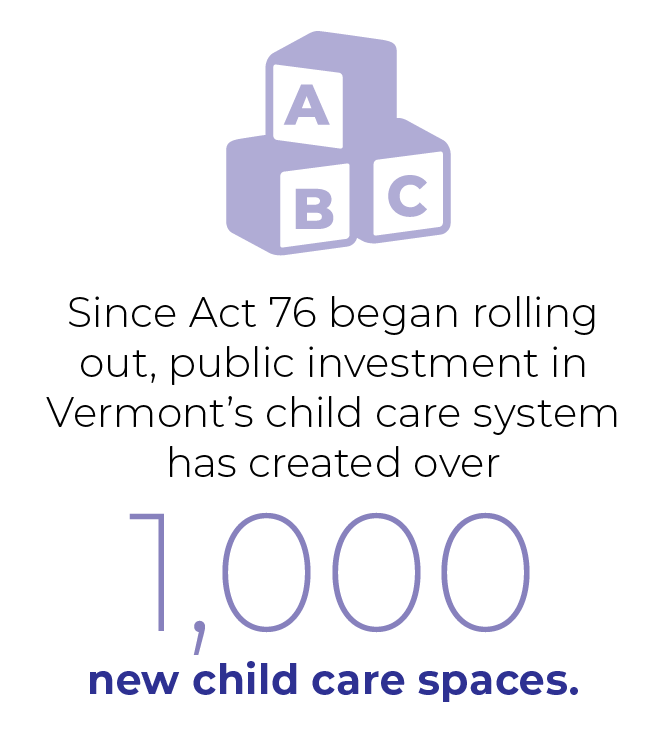 | EARLY CHILDHOOD EDUCATION: Delivering on the Promise of Act 76 - Ensuring an Equitable, Affordable, and Sustainable Early Childhood Education System in Vermont: FY26 Budget, H.472/H.182, H. 248 Result: Some improvements secured Pre-session goal: Continue building on the success of Act 76 with the goal of making it work for all Vermont families with young children, and to ensure that funding gets into the hands of those who need it most – child care programs and early childhood educators, families, and kids. The revenue this fiscal year from the Child Care Contribution (the official name for the new payroll tax which was created by Act 76) is projected to be $19 million higher than original estimates. The Governor’s FY26 Recommended Budget proposed to use that additional revenue to offset costs in other parts of the state budget, which would have resulted in a permanent $19 million reduction to the base General Fund appropriation for child care. The Legislature’s FY26 Budget mostly rejected that proposal, and instead includes: - Creation of a new child care reserve fund ($5 million)
- 5% increase in reimbursement rates for infants and toddlers ($5.5 million)
- One-time funds to grow the Early Childhood Youth Apprenticeship Program ($156,000)
- One-time funds to help child care programs participate in the federal Child and Adult Care Food Program ($182,000)
- Language that says the Legislature intends to restore base child care funding next year
Meanwhile the Senate took the lead on considering the recommendations of the Vermont Office of Professional Regulation (OPR) to establish early childhood education as a profession with a license to practice. OPR’s recommendations are very closely aligned with those developed by Vermont’s early childhood educators through the consensus-based Advancing Early Childhood Education as a Profession initiative. The Senate passed a revised version of the initial OPR proposal in their version of H. 472. However, the House did not have time to fully consider the proposal, so they will take up the issue at the start of the next session. Procedurally, this will happen through H. 182, a bill that was introduced this year and will serve as the vehicle for the proposal to move next year. Finally, the House passed H. 248, a technical correction bill to make needed adjustments to the CCFAP program. The Senate is expected to take up the bill in January. LEAD ORGANIZATIONS: Let’s Grow Kids (LGK) and Vermont Association for the Education of Young Children (VTAEYC) | | | | | | | | | | The Vermont Early Childhood Advocacy Alliance is a statewide coalition formed in 2000 of early childhood professionals, parents, organizations, businesses, and strategic partners committed to improving public policies that impact young children between birth and age eight in the areas of health, safety, food security, economic security, and early care and education. The Alliance crafts an annual Legislative Agenda in partnership with early childhood organizations, provides year-round advocacy support, and facilitates meaningful interactions with policymakers at key times during the decision making process. | | | | 7 School Street | Montpelier , Vermont 05602 vecaa.org The Vermont Early Childhood Advocacy Alliance is a program of the Vermont Community Loan Fund. | | | | | | | | | |